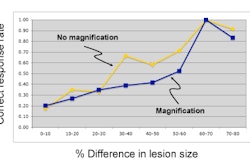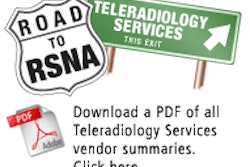PACS technology has evolved so much in the last decade that it's beginning to deliver on promises made during the early years. For sites to fully capitalize on their investment in PACS technology, though, they need to create their own unique implementation plan.
On site visits, I have been consistently amazed at how "perfectly" all the facilities believe they have conducted their process, implementation, phasing, etc. Each site is asked to give its recommendations of what was key during its PACS implementation and give advice on what it would have done differently if it had to do the process again.
And I always wonder: When an organization proclaims its successes and how well it has done, what are the proclamations based on? By what measure have the employees graded themselves? Is it total cost versus budget or return on investment (ROI) versus plan? Is it because the PACS technology is installed and working? Or is it based on a data point of how many PACS implementations -- one?
To grade your facility, the first item to look for, of course, is film -- any film. Depending on how long a site has been live on PACS, the amount of film for priors and the amount of priors on film will vary. Modality integration is another area in which sites have struggled and made trade-offs. I also look for wet processors still operating. Many sites do not have digital mammography yet, so it's understandable to have a wet processor for mammography.
Another film-based issue is enterprise-wide distribution of electronic images. If you are printing film, you are wasting time and money. Every radiology department should constantly be looking at who is asking for what and why.
Paper is another area to evaluate. If paper is being used anywhere before patient arrival, every sheet should be questioned. That said, sometimes paper processes cannot be changed. Certain events may require paper to drive a key workflow event. Some RIS may also have certain weaknesses that require some level of paper to manage events.
Another area is integration (or lack thereof) to other clinical applications. If paperwork is required for an interface, that interface is not optimized. Granted, this can have financial implications, but the soft cost of lower efficiencies should not be ignored, especially after spending hundred of thousands or millions for your PACS.
Seldom are these issues completely obvious. They often require in-depth study and observation. What one site might view as a problem with a product may be a simple workflow issue that has a solution.
PACS can be a complex animal with many, many functions to influence and monitor. A perfectly operating PACS that is not being utilized outside of the radiology department -- requiring film to still be printed on a routine basis -- has not achieved a passing grade.
At many sites, the people involved in vendor selection and PACS implementation are the same ones measuring the project's success. With so many facilities live on some level of PACS, all sites that have PACS should take a step back and really look closely at their operations. Ask yourself: Have we really graded ourselves and benchmarked versus others? How would we do that, and why haven't we done that yet? Are we afraid of what we might find out?
Every facility should spend time evaluating its PACS operations. Perform an audit on areas such as film production, paper usage, Web distribution, referring physician usage, and workflow. It can only help benchmark where you are and where you might need to be.
And if you have an older PACS and are looking at future upgrades or even a full PACS replacement, this process is even more critical. It will help you create a new strategic plan for your PACS that will ensure your PACS not only makes the grade but helps set the curve. Your administration would love to see that level of follow-up and due diligence for this technology investment.
By Michael Mack
AuntMinnie.com contributing writer
April 11, 2008
Mr. Mack is president of the Thomas Group, a PACS consulting services provider in Orange, CA. He will be speaking on this topic at the American Healthcare Radiology Administrators (AHRA) annual meeting in Denver in July. He can be reached at [email protected].
Related Reading
Effective communication is crucial for radiology department success, March 20, 2008
Using informatics to meet communication challenges, February 7, 2008
High-tech communication tools improve patient care, studies find, December 6, 2007
Developing a cost-effective image QA workflow with PACS, November 21, 2007
Achieving the Zen of PACS administration, July 23, 2007
Copyright © 2008 AuntMinnie.com



















